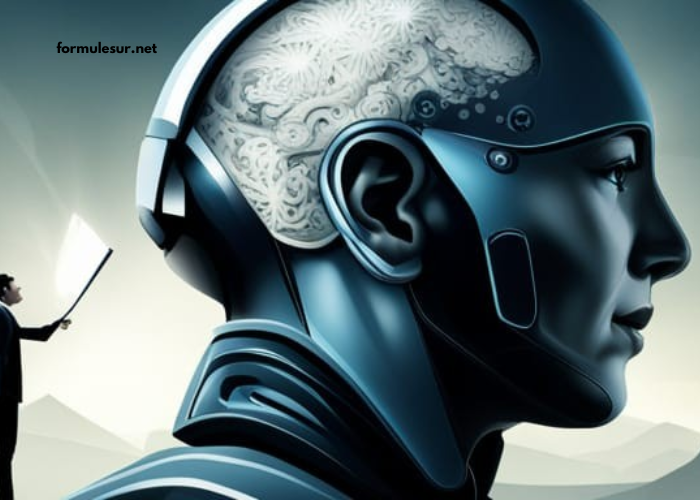The world as we know it is undergoing a transformative revolution, driven by two technological powerhouses: Artificial Intelligence (AI) and automation. These twin forces are not only reshaping industries and economies but are also altering the way humans interact, work, and live. As we move further into the digital age, the convergence of AI and automation is becoming the cornerstone of technological progress.
In this article, we will explore the definition, evolution, applications, benefits, challenges, and the future implications of AI and automation. Let’s dive deep into how these technologies are shaping our world.
What is Artificial Intelligence?
Understanding AI
Artificial Intelligence (AI) refers to the capability of machines or computer systems to perform tasks that would normally require human intelligence. This includes problem-solving, learning, reasoning, language understanding, and even perception.
Types of AI
-
Narrow AI – Designed for a specific task (e.g., Siri, chatbots).
-
General AI – A more advanced form of AI capable of performing any intellectual task that a human can do.
-
Superintelligent AI – A hypothetical form that surpasses human intelligence.
What is Automation?
Defining Automation
Automation refers to the use of technology to perform tasks with minimal human intervention. It ranges from basic mechanical systems to complex, AI-powered robotics that can self-learn and adapt.
Categories of Automation
-
Industrial Automation – Used in manufacturing to control machinery.
-
Business Process Automation (BPA) – Streamlines operations like HR, finance, and customer service.
-
IT Process Automation (ITPA) – Automates workflows in IT operations.
The Symbiotic Relationship Between AI and Automation
How AI Enhances Automation
When AI and automation are combined, automation becomes intelligent. AI empowers automation with the ability to make decisions, learn from data, and optimize performance over time.
Examples include:
-
Smart warehouses using AI for inventory management.
-
Autonomous vehicles relying on AI algorithms for navigation.
-
AI chatbots automating customer service responses.
Key Applications Across Industries
AI and Automation in Healthcare
-
Medical Imaging: AI systems detect diseases like cancer with greater accuracy.
-
Robot-assisted Surgery: Automation increases precision, reducing recovery time.
-
Virtual Health Assistants: AI chatbots provide 24/7 support for patients.
Manufacturing and Industrial Automation
-
Predictive Maintenance: AI analyzes data to prevent equipment failure.
-
Smart Factories: Machines self-monitor and optimize production.
-
Robotics: Automated arms handle repetitive, high-risk tasks.
Financial Services
-
Fraud Detection: AI detects anomalies in transaction patterns.
-
Algorithmic Trading: Automated systems make split-second investment decisions.
-
Customer Service: Virtual assistants provide quick and accurate information.
Retail and E-commerce
-
Personalized Recommendations: AI analyzes user behavior to enhance shopping experiences.
-
Inventory Management: Automation ensures timely restocking.
-
Chatbots: Improve customer interaction and reduce human workload.
Transportation and Logistics
-
Autonomous Vehicles: AI powers self-driving technology.
-
Supply Chain Optimization: Automated systems manage logistics with high efficiency.
-
Delivery Drones: A blend of automation and AI ensures quick delivery in remote areas.
Agriculture
-
Precision Farming: AI sensors monitor soil, weather, and crop health.
-
Automated Harvesting: Machines collect crops more efficiently.
-
Livestock Monitoring: AI analyzes animal health and behavior.
Benefits of AI and Automation
Enhanced Efficiency and Productivity
Automated systems operate continuously, unlike human labor, ensuring higher output with fewer errors. AI enhances decision-making and optimizes resource utilization.
Cost Reduction
Although the initial investment can be high, automation leads to long-term savings by reducing labor costs and operational inefficiencies.
Improved Accuracy
AI-powered systems minimize human error, especially in fields like healthcare, finance, and engineering, where precision is crucial.
Better Customer Experience
AI enables hyper-personalization, faster service, and round-the-clock support, greatly improving user satisfaction.
Innovation and Competitive Advantage
Organizations adopting AI and automation are often more innovative, agile, and competitive in the market.
Challenges and Ethical Considerations
Job Displacement
One of the most pressing concerns is the potential loss of jobs due to automation. While some roles are eliminated, new ones requiring different skill sets also emerge.
Data Privacy and Security
AI systems depend on large volumes of data. Ensuring data security and respecting user privacy are critical.
Bias in AI Algorithms
AI models can reflect human biases if trained on skewed datasets, leading to unfair outcomes, especially in hiring or law enforcement.
Dependence on Technology
An over-reliance on automation can reduce human oversight and decision-making capabilities, especially in high-stakes industries.
Regulatory Challenges
There is a growing need for clear regulations to govern the use of AI and automation to ensure they are developed and used ethically.
The Future of AI and Automation
Rise of Intelligent Automation
The future lies in intelligent automation, where AI, machine learning, and robotics converge to create self-learning, adaptable systems that improve over time.
Human-AI Collaboration
Rather than replacing humans, AI will augment human abilities. Fields like medicine, education, and design will see human-AI teams delivering better outcomes.
AI in Daily Life
From smart homes to personalized learning, AI will become an integral part of our daily existence, improving convenience and lifestyle.
Sustainable Automation
AI and automation will also play a key role in tackling climate change by optimizing energy consumption, waste management, and resource allocation.
How Businesses Can Prepare for the AI-Automation Era
Invest in Skills and Training
Organizations must focus on reskilling and upskilling employees to align with the demands of AI-driven workflows.
Adopt a Strategic Approach
Implementing AI and automation should be aligned with business goals, rather than being technology-led.
Focus on Ethics and Responsibility
Creating transparent, bias-free AI systems and ensuring fairness and accountability should be a priority.
Collaborate and Innovate
Partnering with AI startups, researchers, and tech providers can accelerate digital transformation.
Top AI and Automation Trends to Watch
1. Hyperautomation
An advanced form of automation where multiple technologies (AI, ML, RPA, etc.) are combined to automate complex business processes end-to-end.
2. AI-as-a-Service (AIaaS)
Companies are increasingly turning to cloud-based AI platforms, reducing the cost and complexity of deployment.
3. Edge AI
AI algorithms are moving closer to data sources (edge devices), ensuring faster processing and real-time decisions.
4. No-Code/Low-Code AI
These platforms allow non-programmers to build AI models and automate tasks, democratizing AI development.
5. Explainable AI (XAI)
As AI becomes more pervasive, the demand for transparent and interpretable AI decisions is rising.
Conclusion
AI and automation are no longer just futuristic concepts—they are today’s reality and tomorrow’s foundation. From transforming industries to enhancing daily life, these technologies are driving innovation, efficiency, and growth.
However, their success will depend on how responsibly and strategically they are implemented. By investing in ethical AI, prioritizing human-centered automation, and fostering collaboration between man and machine, we can build a future where technology uplifts humanity.
The future is automated, and with AI steering the way, it is also intelligent, responsive, and full of potential. Now is the time for businesses, governments, and individuals to embrace this evolution, adapt to change, and lead the world into a smarter, more sustainable era.





